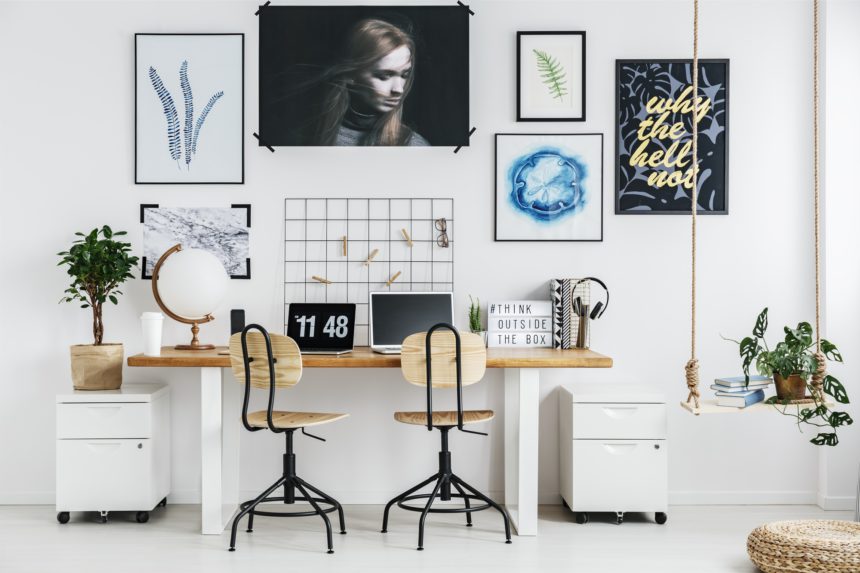Designing a Home Office in a Small Space
In today’s fast-paced world, the need for a dedicated workspace at home has become increasingly important. With more people working remotely, especially since the pandemic, creating an efficient home office in a small space is essential. This article explores how to design a functional home office using multifunctional pieces and vertical storage solutions, ensuring that even the tiniest of spaces can be transformed into a productive environment.
Understanding the Importance of Space Optimization
When designing a home office in a small area, the key is to maximize every inch of space. According to a study by the National Association of Realtors, 54% of homebuyers consider a home office essential. This statistic highlights the growing trend of remote work and the necessity for a well-organized workspace. Here are some reasons why space optimization is crucial:
- Increased Productivity: A well-organized workspace can enhance focus and efficiency.
- Reduced Clutter: Utilizing multifunctional furniture helps keep the area tidy.
- Improved Comfort: A thoughtfully designed office can create a more pleasant working environment.
Choosing Multifunctional Furniture
Multifunctional furniture is a game-changer for small home offices. These pieces serve multiple purposes, allowing you to save space without sacrificing functionality. Here are some examples of multifunctional furniture that can be incorporated into your home office:
- Desk with Built-in Storage: Look for desks that come with drawers or shelves to store office supplies.
- Folding Desks: A folding desk can be easily tucked away when not in use, freeing up space.
- Convertible Sofa Beds: If your office doubles as a guest room, consider a sofa bed that can be used for both purposes.
- Ottomans with Storage: Ottomans can serve as seating and provide hidden storage for documents or tech gadgets.
Implementing Vertical Storage Solutions
Vertical storage is essential in small spaces, as it draws the eye upward and utilizes wall space effectively. Here are some vertical storage solutions to consider:
- Wall-mounted Shelves: Install shelves above your desk to keep books and supplies within reach while saving floor space.
- Pegboards: A pegboard can be customized to hold office supplies, tools, or decorative items, adding both functionality and style.
- Over-the-Door Organizers: Use the back of doors for additional storage with over-the-door racks for files or office supplies.
- Vertical File Cabinets: Opt for tall, narrow file cabinets that take up less floor space while providing ample storage.
Creating a Cohesive Design
While functionality is key, aesthetics should not be overlooked. A cohesive design can make your small home office feel inviting and inspiring. Here are some tips for creating a harmonious workspace:
- Color Scheme: Choose a color palette that promotes focus, such as soft blues or greens, which are known to enhance productivity.
- Lighting: Incorporate natural light where possible, and use task lighting to illuminate your workspace effectively.
- Personal Touches: Add personal items like artwork or plants to make the space feel more comfortable and motivating.
Case Studies: Successful Small Home Offices
Many individuals have successfully transformed small spaces into functional home offices. For instance, a couple in a 500-square-foot apartment utilized a corner nook for their office. They installed a wall-mounted desk and shelves, allowing them to work efficiently without cluttering their living area. This setup not only maximized their space but also created a cozy work environment.
Another example is a freelance graphic designer who converted a small closet into a home office. By removing the doors and adding a small desk and shelving, they created a compact yet stylish workspace that met all their needs.
Conclusion
Designing a home office in a small space is entirely feasible with the right approach. By incorporating multifunctional furniture and vertical storage solutions, you can create a productive and aesthetically pleasing workspace. Remember to optimize your space, choose the right furniture, and maintain a cohesive design. With these strategies, even the smallest areas can become efficient home offices that inspire creativity and productivity.
